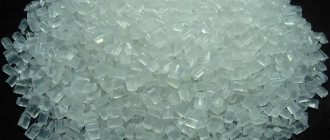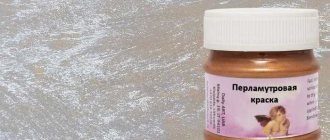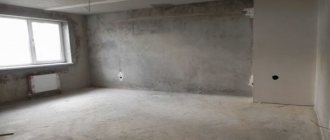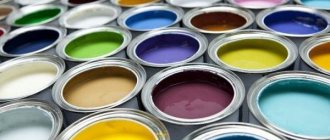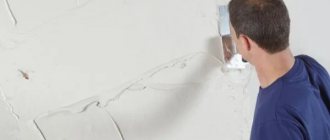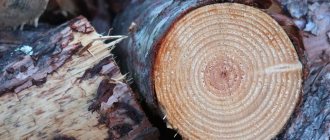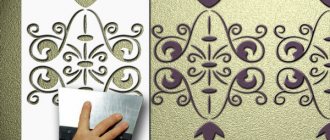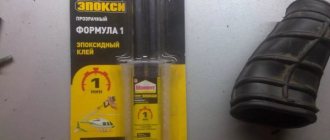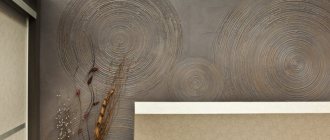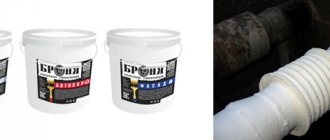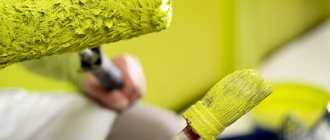Corners play a bigger role in the interior than it might seem at first glance. It is enough to look at their uneven or “erased” surfaces to immediately become clear: no one would call such a finish neat. Decorative corners on the corners of walls, slopes of door and window openings began to be used everywhere during repairs only in recent years. Until then, the materials used to cover the joints simply changed more often than the rest of the finish.
You can appreciate the transformative effect of a decorative element even in an empty room without furniture. Based on the type of location, they are classified into two types:
| Exterior | They are used to decorate the exterior facades of houses. |
| Interior | Used in rooms of city apartments and private houses. |
Elements are also classified into those that are placed on the outer sides of the corners and those that are inserted into the internal ones. The latter can have semicircular shapes that “soften” the finish. You can make a corner with your own hands, or purchase it at a specialized store. Products are made mainly from plastic, MDF, but there are also more durable metal and stone options. Polyurethane effectively imitates various natural materials: wood, marble, sandstone, brick. Plastic corners are used not only as decoration, but also as a durable finishing element that will “outlast” wallpaper or other less durable wall surface coating. There is also a “mystical” component to the question. According to Feng Shui, the places where the “joints” of the walls are considered energy breaks, which create an imbalance and negatively affect the perception of the situation, so their edges are decorated with corners, “smoothing out” the sharpness.
- What are decorative corners for?
- When to apply
- Plastic corner size
- Types of decorative corners on walls Arched
- For ceramic tiles
- For external and internal corners
- Textured corners
- Wooden
- Corners for ceilings and baseboards
- Natural stone corners
- Artificial stone corners
- Finishing door and window slopes
What are decorative corners for?
Corners are most often “touched” by people passing by with their shoulders, elbows and carried objects. Accordingly, it is this part of the wall that is erased and scratched more than the remaining ones. To protect the joint from mechanical stress, a decorative corner is attached to it - a special type of finishing materials, a special “overlay”. It is designed to perform two functions:
- Decorate the finish;
- Protect the sensitive area.
In addition, finishing using these elements looks neater and the interior seems complete. Using the material, color and size, you can emphasize the features of the style used in the design of the room.
Visual impact on the interior
The use of corner finishing will achieve several goals at once:
- alignment of the angle for the visual perception of a flat surface;
- performing not only an aesthetic function, but also a protective one;
- reducing contamination in hard-to-reach areas of the ceiling and floor;
- wall decoration;
- saving space and installing additional furniture;
- improving doorways, window openings and joints between panels.
A profile that contrasts with the slope and wall decoration can create the desired color accent or become an independent original interior detail.
Depending on the material used, different decoration options can be achieved. Stone decoration will make any room unusual. Plastic materials will help achieve completeness and simplicity.
Silicone ones can perfectly complement children's rooms with their abundance of colors and high protective functions.
Designers prefer not to refine the corners, but to remove them. Thus, additional niches appear in place of the usual room walls. They are great for saving space, because other furniture and even household appliances are inserted there.
This “trick” in the interior can be used in bedrooms for bookshelves, in the hallway for shoes and in the kitchen for appliances.
Bold designers practice getting rid of corners. Instead, they will equip an additional recess where you can place:
- interior items: vases, figurines, figurines made of ceramics or glass;
- a relaxation space where you can add a reading table or easy chairs;
- pet houses;
- small home libraries or shelves with magazines.
The corner of the room can be transformed into a practical shelf for books and souvenirs.
Additional Information! In addition to the above, recesses can be used for other purposes. Fantasy knows no bounds and you can come up with any options for convenience and comfort in the apartment.
When to apply
The corner part of the wall is covered with decorative elements in several cases:
- If the corner has visually noticeable defects: curvature, “dimples” or protrusions that were not corrected with plaster;
- When the protruding part obstructs the passage or is located next to the “pedestrian” area. Accordingly, it will constantly be touched, erased, scratched. Over time, mechanical damage will become noticeable and negatively affect the sensitive wall finish and its appearance;
- If without them the interior does not look complete;
- To prevent the destruction of the outer corner of the building and give the exterior a neat appearance.
The installation of elements usually completes the renovation: they literally become the finishing touch in the design.
Why do you need to trim?
There are 3 main reasons to install decorative corners on the corners of the walls:
1. Protection. As already mentioned, external corners need additional protection because... the material on them wears out very quickly from friction, accidental impacts, and other mechanical damage. An exception is wall decoration with washable paint, tiles or porcelain stoneware, or wood.
The photo shows an example of a damaged corner in the hallway
2. Alignment. It is quite difficult to connect two sides at 90 degrees with plaster - without experience it is almost impossible to do it yourself, and the work of a specialist will cost a lot of money.
To simplify the task, use special leveling corners for putty or external decorative elements after finishing.
Plastic corner size
The standard range of sizes for PVC corners starts with 10x10 mm and ends with 50x50 mm. Between them, gradations with a difference of 5 mm are used. Parts of non-traditional sizes are made to order. An angle of 90 degrees is maintained between the two guides of the decorative element, at which all planes of the apartment must intersect. If you have a home with “crooked” walls, then you need to take appropriate measurements and contact a specialist with a request to make individual parts.
Types of protective corners: from what materials
Before you understand how to glue a corner to a wall with wallpaper, you should understand the existing types. In this article, the emphasis is on working inside the house, highlighting the following types of corners:
- Plastic, created in different shades and textures;
- Metal;
- Made of wood, it can create relief on the surface;
- MDF, creates the effect of different wood, there may be patterns, the structure is smooth;
- Cork;
- Made from rubber, they are popularly used in medical and children's institutions;
- Foamed type of rubber, soft option, convenient for children's rooms;
- Decorative, they are complemented with various details - rhinestones, stones, etc.
Most often, plastic products are chosen; there are many options on sale. If you look for something, you can choose the best option in terms of shade and texture so that they look beautiful and stylish in the room.
Plastic, they are created in different shades and textures.
Types of decorative corners on walls
Corners are universal finishing elements. They are pasted in bathrooms, kitchens, bedrooms, balconies, offices and living rooms. Decoration is carried out using several types of elements:
- Arched, for plasterboard partitions;
- For ceramic tiles. The same category includes profile strips for the bathroom;
- Corners made of natural and artificial stone;
- Options made of wood;
- Special guides for siding (exterior decoration);
- Corners for ceiling and floor “joints”;
- Textured options;
- For external and internal corners;
- Corners for door and window openings.
Each type is combined with a specific wall decoration and organically blends into specific styles. Corners are used to decorate not only walls, but also fireplaces, stoves, furniture, and “boxes” for masking communications and pipes.
Arched
Arched corners are used under plaster or glued on top of an already finished surface. “Internal” elements provide smooth straight lines. Corners for semicircular partitions are characterized by increased flexibility, which allows them to be tightly bent to curved surfaces of the base. If the decorative wall has a strict rectangular or square shape, then the decorative elements can be selected from standard plastic options designed for simple walls.
For ceramic tiles
Ceramic tiles are used to finish walls and floors in kitchens and bathrooms. At the corners, the tile seams are tightly sealed, they do not allow water to pass through, but they collect dust, dirt and grease (in the food preparation area). Also, these places are usually used by bacteria and fungi to organize their “breeding ground”. Microorganisms will not get under properly treated seams, but they can easily make a comfortable “home” on their surface. When cleaning tiles, it is recommended to pay special attention to these areas. Overlaying the corners allows you to reduce the scope of work and make the place where the walls meet reliably protected from the adhesion of dirt particles. In addition, the decorative element will competently disguise uneven tile cuts, and options that contrast with the color of the tile will add chic to the room. Corners are divided into two types:
- Internal. They are used to decorate joints between walls and ceilings, floors, showers, that is, “pressed-in” corners. Usually have a convex or concave shape (fillet);
- External. Used when processing protrusions.
Popular plastic is not used for decorating tiles, since the main coating can compete with polyurethane in durability and strength. We need all the finishing elements to “age” approximately equally, otherwise, due to a corner that has become unusable, the tile will have to be “disturbed” once again. Metal and ceramics are used to decorate tiled surfaces.
There are so-called “ribbon” corners. They are made of flexible plastic, produced in “reels”, are highly flexible, and can be easily replaced if necessary. This option is ideal for quick repairs.
For external and internal corners
Separately, elements are classified into external and internal. The former are used to decorate protruding joints of surfaces. The latter are used less frequently in “concave” corners. The latter are not in such dire need of protection, so overlays are only needed to decorate the finish. Inner corners usually have a semicircular concave or convex shape.
Textured corners
Textured options differ in color and pattern. They are usually made of plastic. Often the corners imitate a specific material: bricks, marble or granite surfaces, porous stone, wood (wenge, cork, oak, cherry). A variety of shades allows you to choose a contrasting or background option for a specific interior.
Wooden
Wooden corners are usually made from thin MDF plates, bamboo, cork or veneer. The materials are as light as plastic. MDF is flexible, and a decorative layer with a protective film from damage is applied to the surface of the compressed sawdust. In veneer versions, the element is made from thin wood slices, that is, it is more natural and has a natural pattern. Solid wood corners are denser. Glued to the surface, they will protrude slightly on it.
It is not recommended to use natural wood in bathrooms and kitchens. Before attaching the material, it should be coated with a layer of varnish. Wooden elements are most often made independently. Unfortunately, a cracked corner can become deformed and crack under a strong impact. You will have to “pay” for the natural beauty of the decorated surface with a lower service life.
Corners for ceilings and baseboards
Ceiling and floor plinths at the junctions of individual modules have a very unsightly appearance. No matter how carefully the cuts are processed, they will slightly undermine the aesthetic picture of the interior. Decorative corners are used to disguise them. In appearance, they differ from wall-mounted options: they look like small overlays that are designed to decorate a small area. For ceiling plinths with stucco molding in classical styles, special corners with monograms are purchased, repeating each bend of the connected straight lines. The use of elements on ceilings is not mandatory, which cannot be said about floors. Here, the baseboards are constantly in contact with the feet of guests and household members. Their “joints” can become loose, frayed and become completely unusable. The corners will save the baseboards from rapid wear.
In design compositions, the lower decorative elements sometimes echo the upper ones. This solution ensures the integrity of the composition, so ceiling and floor plinths often have the same outlines, and accordingly, identical corners are selected for their decoration.
Natural stone corners
Decorative elements made of natural stone are usually used to decorate the facades of houses. Due to the strength of the material, they serve as excellent protection against building destruction. However, with the popularization of the industrial loft, brick and stone masonry have become an organic addition not only to the exterior, but also to the interior of the house. Such corners will definitely “protrude” slightly above the surface. You should choose flat stones that will ensure a neat appearance of the entire structure. They are fastened with cement mortar, that is, the corner will be monumental and installed for ten years. Elements are combined with plasterboard walls, relief plaster and wooden lining.
Artificial stone corners
Corners made of artificial stone are considered cheaper and more practical options. As a rule, imitation is made of plastic. It repeats not only the color, but also the “rough” texture of the surface. PVC is flexible, often goes beyond the “borders” of the corner and creeps onto the wall itself. This solution is used to create the illusion of naturalness of the decoration, because real stonework usually does not fit the line. Combine the corner with wallpaper and the same plastic panels. It is important to know. Thick wallpaper is considered the most budget-friendly imitation of stone at the corners. Curly pieces are cut out of them along the contours of the pebbles and glued to the joint. Such an element will not protect the surface from scratches and damage, but it will cope with the decorative task.
Decorating corners in an apartment: how to decorate a room with corners
Options for using decorative corners in the interior design of a room depend on many factors:
- Surface materials. A white plastic corner glued to the corner of clapboard walls will look ridiculous.
- Finish colors. Under no circumstances should a red element be placed in a room designed in pastel colors.
- General stylistic solution of the interior. A polished stainless steel profile will not fit into a classic interior; a polyurethane “stucco” profile will not fit into a high-tech style.
- Purpose of the room. Silicone corners are great for children. They will keep the corners intact and help protect the child from injury.
Wallpaper design options
To complete the finishing after wallpapering, a profile made of any of the above materials can be used. The main criterion when choosing a corner will be its color. The choice of color can be approached in different ways. If the joining walls are approximately the same shade, you can choose the product to match the color of the walls; if they are different, you can match the color of the wall to which the eye is most often drawn. For example, when finishing the corner between a room and a hallway, it is more logical to choose a profile that matches the color of the room’s decoration.
One of the finishing options is decorating with a wooden corner, tinted to match the color of the doors or floor using impregnated stain and coated with varnish. Products made of MDF and PVC, decorated to look like wood, are suitable for the same purposes. When decorating a strict, laconic interior, metal corners will look good.
Solution for corners on slopes: the better way to seal corners in an apartment
To complete the finishing of the slopes, corners are used in the color of the slope, almost always white. Often the material for slopes is a sandwich panel, therefore, to ensure that the material does not differ much, PVC corner profiles are used. The width of the shelf is selected so that it covers the end of the panel or gypsum board. If there are any finishing defects near the window opening, for example, unevenly cut wallpaper, the corner is chosen to be of such a width that these errors are covered.
The angle between the wall and the slope is usually more than 90°; in order for the corner to lie flat, it should be slightly “bent” - placed on a flat surface or a large-diameter pipe and lightly pressed with your hands, moving along the corner.
In the cold season, the profile must warm up to room temperature before use.
Option for decoration under wallpaper
For walls covered with wallpaper, the option of wallpapering a corner may be suitable. For these purposes, profiles made of PVC, MDF, wood or smooth polyurethane are suitable. The profile should be a light shade, because... dark may appear from under the wallpaper. Wallpaper is pasted onto it, the glue is allowed to dry, then, no earlier than the next day, it is mounted on the wall. The wallpaper on the corner should be glued in one piece, of such a size that the wallpaper extends onto the inside of the shelves.
Options for using corner profiles for finishing corners
The corner profile is used to decorate the following elements:
- “Natural” joints between walls that are in a vertical plane;
- Door and window slopes;
- Places of “convergence” of ceilings, floors and walls in horizontal planes with a concave shape;
- Corners of decorative partitions, including arched openings;
- Joints between shower cabins, fireplaces and other “monumental” (not involving movement) interior objects and walls and floors.
A decorative element can be used to “smooth out” any “seam” at the junction of finishing materials. If previously it was necessary to carefully process the cuts so that they retained a beautiful aesthetic appearance, now they are allowed to have irregularities and chips, which will be masked by the corner.
Finishing door and window slopes
Double-glazed windows usually come with special corners that complete the installation of the window. Door sets also often include trims and trims. If the corners are left without additional protection, then you will have to select and glue it yourself. The element will protect the slopes from damage and smooth out the junction of two different materials. For example, the end of the wallpaper will begin to wear off and peel off over time. No matter how smoothly you cut the finishing material on the slope, it will look untidy without additional coating. Slopes in doorways can be scratched by furniture carried through them.
The best option would be to use polyvinyl chloride corners. If necessary, it is easy to replace, and the surface texture can imitate any natural materials. By choosing a special shade, you can create an illusory transitional border between the color of the wallpaper and the window frame or doorway. Corners made of veneer or bamboo are less commonly used.
Arched doorways
Arched openings, as a rule, have one of the classic shapes: with a semicircle on top. Not every material can replicate its contours. For example, solid wood corners can only be used to decorate straight lines. Smooth transitions are decorated with elements made of flexible plastic, MDF, veneer or bamboo. All of the above options will easily follow the contours of the arch and complete the design of the doorway.
How decorative corners are attached
To install the corner profile, various adhesives are usually used; much less often, metal and wooden parts are fastened mechanically using self-tapping screws or nails.
What to glue plastic ones to?
For fastening PVC corners the following are used:
- "liquid Nails";
- acrylic sealant;
- silicone sealant.
When using sealants, profiles must be fixed for 12 hours after gluing using masking tape. Liquid nails give the best results; some brands of this glue do not require fixation while drying. As a rule, such glue needs to be applied to one of the surfaces, pressed on the other, then removed, let the glue dry, and then press firmly on the part to be glued.
To install polyurethane products, you can also use liquid nails or special glue.
Finishing wooden corners in an apartment
The surface of wooden corners must be protected with varnish or paint. Varnish will preserve the texture of the wood; a thick layer of paint will hide it. If you need to give the wood some shade while maintaining the texture, you should use a wood stain or tinting impregnation.
The wooden elements are fastened using liquid nails, wood glue or PVA. Can also be attached to finishing nails.
When driving a nail, the distance from the edge of the part to the nail should be more than 10 of its diameters.
How to glue a plastic corner on wallpaper
The plastic corner is glued to the wallpaper using the same adhesives as to any other surfaces, i.e. liquid nails or sealants. It is important that the wallpaper at the installation site is well glued to the wall and that the wallpaper glue is dry. It is best to wait a few days after pasting the wallpaper and only then start decorating using corners.
How to glue a plastic corner yourself
In addition to decorative corners, you will also need a fastening compound. For narrow elements it is not recommended to use glue, the excess of which cannot be removed from the surface without leaving a trace. Before carrying out the procedure, the joint must first be cleaned of dirt and remnants of wallpaper or protruding pieces of finishing material. No corners will save an excessively uneven and bumpy surface. Then the wall is measured. The measurements are exactly transferred to a piece of corner. It is better to cut the material with a hacksaw with fine teeth. Do not forget about the joints between the corners themselves (in doorways, windows): two straight lines should end with cuts at an angle of 45 degrees. The “wrong” side of the prepared material is coated with glue and applied to the wall. Using your hands, firmly press the corner to the surface and hold it until the fastening composition “seizes”
How to cut finishing corners
Almost always, corners have to be cut to protect the corners of walls. They are sold in strips from 2 to 3 meters long. The cutting tool is selected depending on the type of material. For wood and metal, thick plastic, you will need a hacksaw, but the blade is different - for wood, and with a fine tooth for metal or thick-walled plastic.
Thin plastic can be cut with a construction or stationery knife or sharp scissors. If you need to cut perpendicularly, it is easier to use scissors. We use them to cut to the corner on both sides, bend the corner, and cut the remaining millimeters with a stationery knife. If there are flaws, they can be easily corrected with the same knife or very fine-grain sandpaper (polishing).
How to cut protective plastic corner (PVC)
If the plastic corner needs to be cut along the fold, cut it along the inner corner using a stationery knife. There is no point in cutting through the entire thickness. You just need to leave a noticeable stripe. Then we bend the piece that needs to be removed. It comes off at the cut site. We remove irregularities with a knife or sandpaper.
Interior decoration using slats
In the classic style, wide decorative slats with minimal clearance are used. Modern design emphasizes the relief of narrow buffels on a plain background. In high-tech, they play with black and white matte monochrome made from a metal profile. In a Scandinavian interior, painted slats are arranged in a continuous pattern, sometimes turning into a lattice.
Options for installing buffelsSource comfortoria.ru
If massive iron slats are used in the design or a TV is planned to be hung on the wall (pictures in heavy baguettes), then the material is mounted on a frame. The surface is pre-primed against mold and putty is applied. A lathing is assembled from the bars, onto which the lamellas are fixed with screws or nails. The finished structure is coated with varnish, paint or tinting stain.
Original use of slatsSource yandex.by
You can hang a TV, a pot with plants, or framed photographs on a decorative wall. On a wooden or metal surface, shelves that match the tone or are darker (lighter) than the background look original. A panel made of live moss and LED lighting harmoniously fits into the interior with slats.
Beautiful slatted designSource baffelua.com
Vertical baffle partitions between rooms should not put psychological pressure. In a small room it is better to use material of medium width and light shades. In three-dimensional space, boards of different parameters and tones are used. The raw material matches the color and texture of the finish on the floor.
Design of a small roomSource zen.yandex.com
Slatted finishing in designSource zen.yandex.by
If decorative slats extend from the walls to the ceiling, then the area needs to be well lit. A pendant chandelier or flat lamp is mounted in the center of the site. For finishing with a three-dimensional relief, spot LEDs are installed between the elements on top.
Decoration and lighting in the roomSource woodline.msk.ru
The functional half-partition made of slats, located in the center of the room, looks unusual. A large TV panel or a bright picture in a frame is mounted on the surface. Living plants in identical pots are hung on the crate in a symmetrical order.
In a room combined with a loggia, designers often use slatted partitions. The material is installed in the opening of the window block, creating a decorative translucent wall. The wood element echoes the design of the space. It is recommended to use panels made from natural raw materials indoors.
Partition to the loggiaSource yandex.ua
Steel angle - strictly according to GOST
Based on the cross-sectional type, products are divided into equal-flange and unequal-flange. The shelf of an angle is one of its sides, to put it in plain language. Equal-sex ones, as the name suggests, have identical shelves, which cannot be said about unequal-sex ones. The range of the latter is limited and is often made to order.
The shelf width varies from 20 mm to 200 mm, the metal thickness reaches a maximum of 16 mm. The weight of a steel angle is measured in kilograms per meter, for example, for an equal-flange product with a shelf width of 20 mm and a metal thickness of 3 mm, the weight will be 0.890 kg/m. For the largest representative of this family - a two-hundred-millimeter product - with a thickness of 12 mm, the weight will be about 37 kg/m.
According to the accuracy class, corners are divided into high-precision products, also known as class A, and ordinary accuracy, class B. Products are numbered depending on the width of the shelf, which is measured in millimeters. The standard length of products is from six to twelve meters, this is not counting the unmeasured length, the minimum value of which is 4 meters. When producing large batches of a strictly defined size, according to GOST, 15% of oversized products are allowed.
Design of aprons for the kitchen
Chipboard panels for walls
The part of the kitchen wall that is adjacent to the sink, hob, and cutting table definitely needs protection. Tiles, as a decorative finish, are giving way to glass, mirrors, and decorative hardboard panels. It is difficult to make these surfaces continuous, therefore, there is a need to design corners and joints where different materials meet.
In such cases, various elements are successfully used. For example, a decorative metal corner looks good when decorating glass or mirror mosaics. Corners made of polished or painted aluminum look appropriate in conditions of high humidity. It is inappropriate to use MDF parts here - their service life will not last long.
Decorative corners on the walls are an important part of interior design. Properly selected elements will allow you to obtain unique solutions for decorating your apartment and extend the service life of parts until the next renovation.
Types of adhesives
Before gluing the plastic corner, choose the right product for the procedure. Today, there are four items to choose from, familiarize yourself with the characteristics of them before work - how to apply, how long it takes to set, whether it is suitable for the material, etc.
Types of glue for plastic corners
- Liquid Nails.
They have good durability. This glue spreads easily over the surface of the plastic corner. Apply dotted or zigzag. Liquid nails are capable of connecting glued products for more than 20 years without losing their properties. The setting force after complete hardening is 40 kg/m2. It has anti-corrosion properties and does not damage or pollute plastic. When purchasing, give preference to a colorless composition, especially if you have to work with light-colored surfaces.
- Silicone sealant.
Used to connect corners with wallpaper, as well as tiled and ceramic walls if acrylic is present in the composition. It is characterized by the absence of toxic chemicals and high adhesive properties.
- Polyurethane glue. Durable, elastic and does not leave stains. Hardens quickly.
- Liquid plastic. Suitable for use only on plastic surfaces (for example, window slopes). Fast-acting, highly durable and reliable.
You need to apply glue from the inside of the part, closer to the middle. The spaces between dotted drops are 1-1.5 cm.
Example of glue application
There are also self-adhesive corners, which are glued immediately after measuring and creating the required size and shape. To do this, remove the protective tape and press the product against the protruding corner.
Protect corners from damage
In an apartment there is always a risk of chips and dents that form defects on the wall. Angles are a common victim of such changes, as they are usually more tactilely close.
With texture
A decorative element covering a corner from the outside or inside helps protect it. We are talking about any type of product. The plastic element also becomes a barrier that holds the structure together and prevents it from crumbling or collapsing.
Specialized products cope with this task more successfully. They are usually made of rubber materials; silicone options are widely used.
Interesting! If there is a small child in the apartment, the use of silicone pads is important. They do not guarantee absolute safety, but they significantly reduce the risk of injury from falls.
Shapes and sizes
Finished versions of the product are standardly made with a 90-degree angle. The angle is created acute, but rounded types are also found. According to the degree of protective properties, the material can be divided into the following:
- Hard;
- External;
- Internal;
- Flexible;
- Universal.
The latter type is so called because of the ability to glue them at different-degree angles, due to the flexible central part, which is soft. For this reason, protective functions are somewhat reduced in this zone.
Shelves of material can differ in size; they are more popular with the same sides, but they are also found with different widths. The width can also be varied; here the choice is made based on the specific angle and preferences of the owner.
Finished versions of the product are standardly made with a 90-degree angle.
